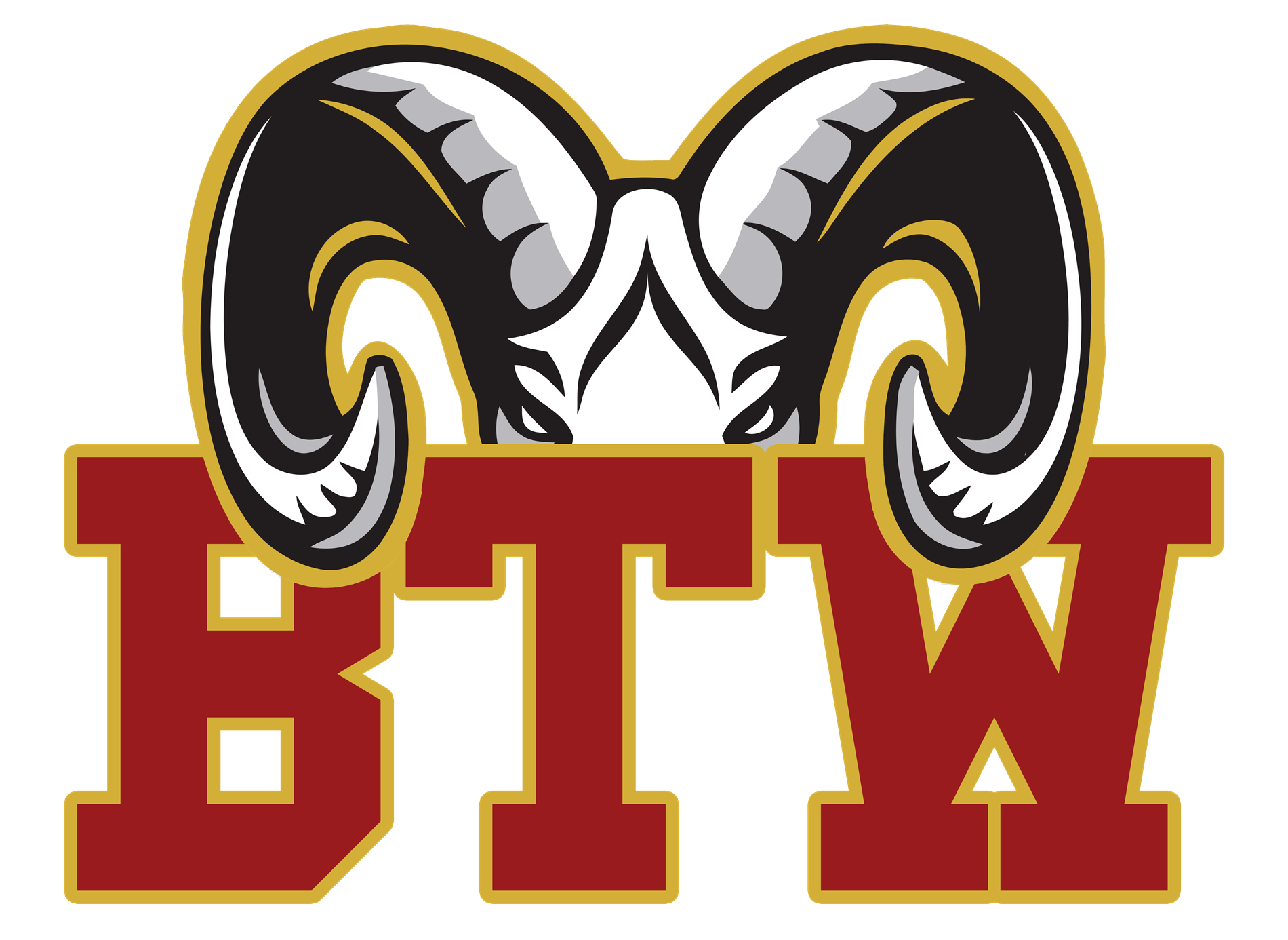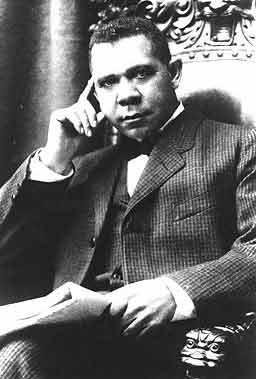About The School

Mission Statement
The mission of Booker T. Washington Middle School is to teach all students to become lifelong learners. We will maintain a commitment to high expectations, honesty, loyalty, professionalism, and respect.
School's History
The Booker T. Washington Middle School was originally named the Toulminville Junior High School. The school opened September, 1954 with Wayman R.F. Grant as Principal. The school, with twenty-nine classrooms, a library, cafeteria, and other facilities, accommodated students in grades three through nine.
In 1955, the school’s name was changed to Booker T. Washington in honor of Dr. Booker T. Washington, Jr., founder of Tuskegee University, and the first black chosen to the New York University’s Hall of Fame.
During the span of 62 years, Washington Middle has had seven principals: Wayman R.F. Grant, Sr., Fred N. Green, Fredrick A. Marshall, Eddie Butler, Rosalyn Dean. Dr. Bernard Johnson, Douglas July, Reginald Wilson and now Mrs. Angie Day-Brown; twelve assistant principals; William W. Owen, Gladys O. Gordon, Ruth W. Todd, Jake Lafitte, Jane Self, Pat Powell, Roy Bearden, Robert L. Kerzio, Bernard Rodgers, Larry Moulton, Robert Blakely, Kenneth Edwards, Robert Pettis, Bernard Everett, Dr. Alicia Simmons-Ferrell, Keshia Barnett, Twilla Hill, and Patrick Armstrong.

Student's Pledge
As a student at Booker T. Washington Middle School
I pledge to follow the written uniform policy at all times,
Take responsibility for myself and my actions,
Exhibit pride in my school,
Respect myself, my teachers, classmates, others and my school property,
And to always be on time, prepared, and respectful!
Booker T. Washington's School Song
Booker T. Washington name of fame
Our pride and courage remains the same,
Into the hearts and minds of our youth,
Are the ideas of valor, honor, and truth;
Chorus
Let us rise and sing to thee,
Booker T. Washington we love thee,
With love and faith our hearts unfold,
Oh loyalty to the Crimson and Gold!
Ole school in thee there is only light
Our aim is great and our future is bright;
With you at our side, we could never fail
Because the path was laid by the one unveiled!
Chorus
Let us rise and sing to thee
Booker T. Washington we love thee with love and faith our hearts unfold
Oh loyalty to the Crimson and Gold
History of Booker T. Washington

Booker Taliaferro was born a mulatto slave in Hale’s Ford, Virginia on 5th April, 1856. His father was an unknown white man and his mother, the slave of James Burroughs, a small farmer in Virginia. Later, his mother married the slave, Washington Ferguson. When Booker entered school he took the name of his stepfather and became known as Booker T. Washington.
After the Civil War the family moved to Malden, West Virginia. Ferguson worked in the salt mines and at the age of nine Booker found employment as a salt-packer. A year later he became a coal miner (1866-68) before going to work as a houseboy for the wife of Lewis Ruffner, the owner of the mines. She encouraged Booker to continue his education and in 1872 he entered the Hampton Agricultural Institute.
The principal of the institute was Samuel Armstrong, an opponent of slavery who had been commander of African American troops during the Civil War. Armstrong believed that it was important that the freed slaves received a practical education. Armstrong was impressed with Washington and arranged for his tuition to be paid for by a wealthy white man.
Armstrong became Washington's mentor. Washington described Armstrong in his autobiography as "a great man - the noblest rarest human being it has ever been my privilege to meet". Armstrong's views of the development of character and morality and the importance of providing African Americans with a practical education had a lasting impact on Washington's own philosophy.
After graduating from the Hampton Agricultural Institute in 1875 Washington returned to Malden and found work with a local school. After a spell as a student at Wayland Seminary in 1878 he was employed by Samuel Armstrong to teach in a program for Native Americans.
In 1880, Lewis Adams, a black political leader in Macon County, agreed to help two white Democratic Party candidates, William Foster and Arthur Brooks, to win a local election in return for the building of a Negro school in the area. Both men were elected and they then used their influence to secure approval for the building of the Tuskegee Institute.
Samuel Armstrong, principal of the successful Hampton Agricultural Institute, was asked to recommend a white teacher to take charge of this school. However, he suggested that it would be a good idea to employ Washington instead.
The Tuskegee Negro Normal Institute was opened on the 4th July, 1888. The school was originally a shanty building owned by the local church. The school only received funding of $2,000 a year and this was only enough to pay the staff. Eventually Washington was able to borrow money from the treasurer of the Hampton Agricultural Institute to purchase an abandoned plantation on the outskirts of Tuskegee and built his own school.
The school taught academic subjects but emphasized a practical education. This included farming, carpentry, brickmaking, shoemaking, printing and cabinetmaking. This enabled students to become involved in the building of a new school. Students worked long-hours, arising at five in the morning and finishing at nine-thirty at night.
By 1888 the school owned 540 acres of land and had over 400 students. Washington was able to attract good teachers to his school such as Olivia Davidson , who was appointed assistant principal, and Adella Logan. Washington's conservative leadership of the school made it acceptable to the white-controlled Macon County. He did not believe that blacks should campaign for the vote, and claimed that blacks needed to prove their loyalty to the United States by working hard without complaint before being granted their political rights.
Southern whites, who had previously been against the education of African Americans, supported Washington's ideas as they saw them as means of encouraging them to accept their inferior economic and social status. This resulted in white businessmen such as Andrew Carnegie and Collis Huntington donating large sums of money to his school.
In September, 1895, Washington became a national figure when his speech at the opening of the Cotton States and International Exposition in Atlanta was widely reported by the country's newspapers. Washington's conservative views made him popular with white politicians who were keen that he should become the new leader of the African American population. To help him in this President William McKinley visited the Tuskegee Institute and praised Washington's achievements.
In 1901, President Theodore Roosevelt invited Washington to visit him in the White House. To southern whites this was going too far. One editor wrote: "With our long-matured views on the subject of social intercourse between blacks and whites, the least we can say now is that we deplore the President's taste, and we distrust his wisdom."
Washington now spent most of his time on the lecture circuit. His African American critics who objected to the way Washington argued that it was the role of blacks to serve whites, and that those black leaders who demanded social equality were political extremists.
In 1900 Washington helped establish the National Negro Business League. Washington, who served as president, ensured that the organization concentrated on commercial issues and paid no attention to questions of African American civil rights. To Washington, the opportunity to earn a living and acquire property was more important than the right to vote. Like those who helped fund the Tuskegee Institute, Washington was highly critical of the emerging trade union movement in the United States.
Washington worked closely with Thomas Fortune, the owner of the New York Age. He regularly supplied Fortune with news stories and editorials favorable to himself. When the newspaper got into financial difficulties, Washington became secretly one of its principal stockholders.
Washington's autobiography was published in The Outlook magazine and was eventually published as Up From Slavery in 1901. His critics argued that the views expressed in his books, articles and lectures were essentially the prevailing views of white Americans.
In 1903 William Du Bois joined the attack on Washington with his essay on his work in The Soul of Black Folks. Washington retaliated with criticisms of Du Bois and his Niagara Movement. The two men also clashed over the establishment of the National Association for the Advancement of Coloured People (NAACP) in 1909.
The following year, William Du Bois and twenty-two other prominent African Americans signed a statement claiming: "We are compelled to point out that Mr. Washington's large financial responsibilities have made him dependent on the rich charitable public and that, for this reason, he has for years been compelled to tell, not the whole truth, but that part of it which certain powerful interests in America wish to appear as the whole truth."
Although he now had a large number of critics, Washington continued to be consulted by powerful white politicians and had a say in the African American appointments made by Theodore Roosevelt (1901-09) and William H. Taft (1909-13).
Booker Taliaferro Washington was taken ill and entered St. Luke's Hospital, New York City, on 5th November, 1915. Suffering from arteriosclerosis he was warned that he did not have long to live. He decided to travel to Tuskegee where he died on 14th November. Over 8,000 people attended his funeral held in the Tuskegee Institute Chapel.







